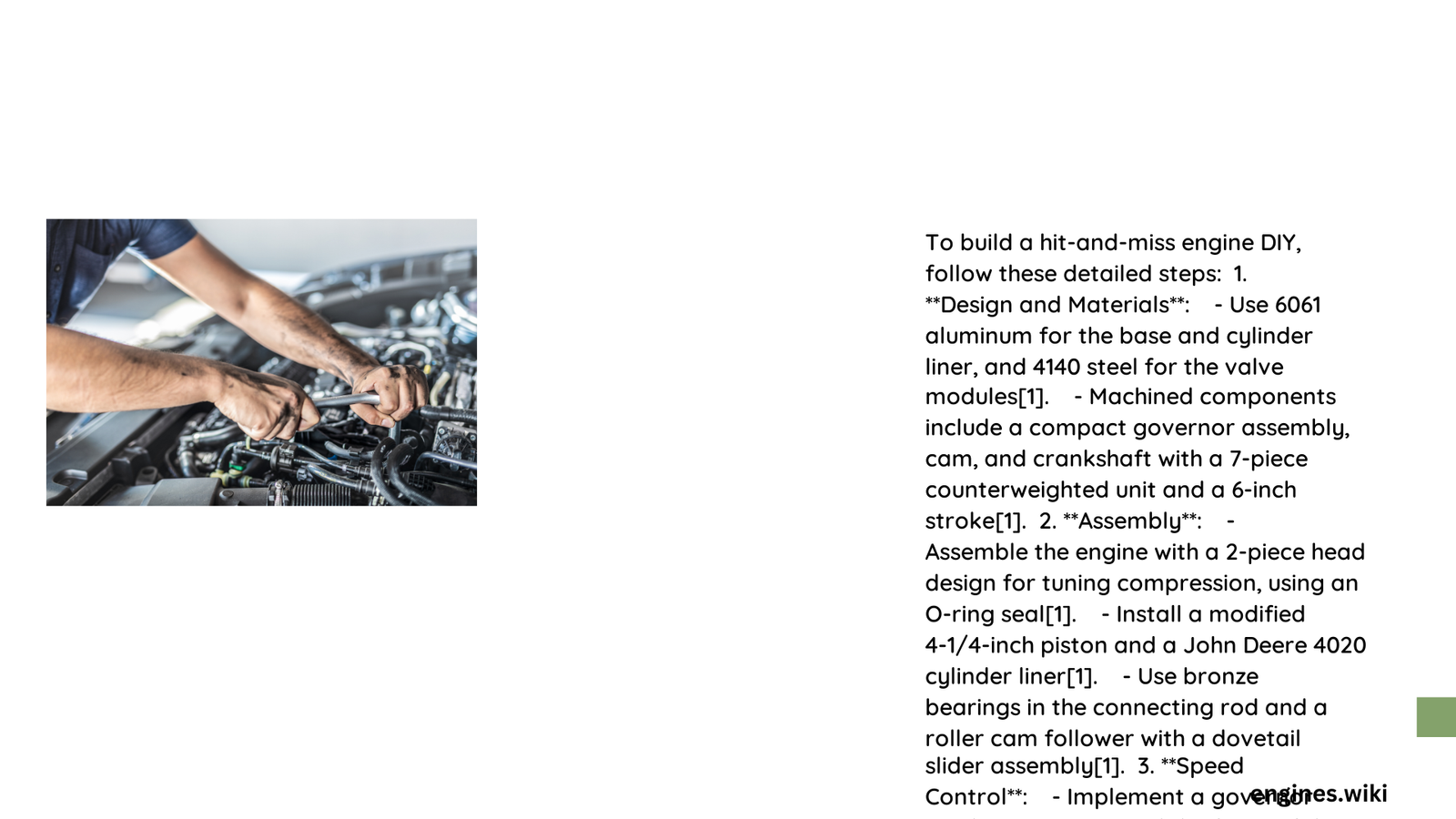Hit and Miss Engine DIY: Mastering Vintage Power Generation
Project Overview
A hit and miss engine DIY project represents a fascinating journey into mechanical engineering’s historical roots, offering hobbyists and engineers an opportunity to recreate a powerful vintage power generation technology. These remarkable engines, popular in early 20th-century agricultural and industrial settings, operate through a unique governor mechanism that controls engine speed by selectively firing cylinders, making them an intriguing restoration challenge for mechanical enthusiasts.
What Materials Do You Need for Hit and Miss Engine Construction?
Essential Components List
- Base Materials
- Welded steel stock
- Flat ground surface plate
-
Precision machining surface
-
Mechanical Components
- Cylinder block (6061 aluminum)
- Piston assembly
- Crankshaft
- Connecting rod
- Flywheels
- Valve system
Recommended Tools
| Tool Category | Specific Requirements |
|---|---|
| Machining | Lathe, milling machine, drill press |
| Measurement | Micrometer, dial indicator |
| Fabrication | Welding equipment, grinding tools |
| Assembly | Precision alignment tools |
How Can You Design the Engine Frame?
The engine frame serves as the critical foundation for your hit and miss engine DIY project. Consider these key design principles:
- Structural Integrity
- Use high-strength steel or aluminum
- Ensure flat, stable mounting surface
-
Design for minimal vibration
-
Thermal Management
- Incorporate cooling fins
- Allow proper heat dissipation
- Design for optimal thermal performance
What Machining Techniques Are Critical?
Precision Machining Steps
- Cylinder Boring
- Use 8-inch diameter aluminum stock
- Precision bore to exact specifications
-
Install cylinder liner carefully
-
Crankshaft Preparation
- Create 7-piece counterweighted unit
- Hard-chrome shaft surfaces
- Ensure perfect balance
How Do You Assemble the Governor Mechanism?
The governor represents the heart of a hit and miss engine’s unique operational characteristics. Key assembly considerations include:
- Compact design
- Precise cam integration
- Smooth mechanical interaction
- Consistent speed regulation
Troubleshooting Common Hit and Miss Engine DIY Challenges
Potential Issues and Solutions
- Starting Difficulties
- Check compression
- Verify fuel delivery
-
Inspect ignition timing
-
Performance Inconsistencies
- Examine valve clearances
- Validate governor adjustment
- Verify flywheel balance
Safety and Maintenance Recommendations
- Always wear protective equipment
- Work in well-ventilated areas
- Use proper lifting and handling techniques
- Regularly inspect and lubricate moving parts
Cost Estimation
Estimated Budget Breakdown
– Materials: $500 – $1,500
– Tools: $300 – $2,000
– Miscellaneous Expenses: $200 – $500
Final Thoughts
Building a hit and miss engine DIY project requires patience, precision, and passion. Each completed engine represents a remarkable achievement in mechanical restoration and personal craftsmanship.

